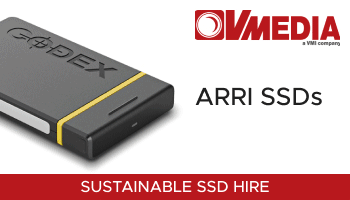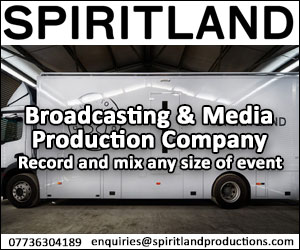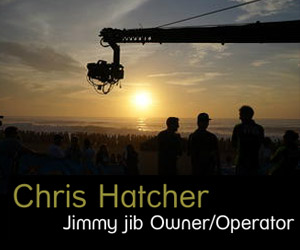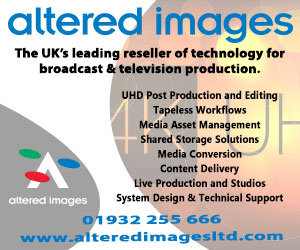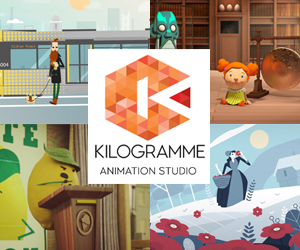Broadcast News
09/06/2014
4K OK? Understanding UltraHD... (Pt 1)

In a bid to get his head around the intricacies of 4K format ahead of this summer's landmark broadcasting event, editor Iain Todd spoke to some industry experts on the future of UHD broadcasting...
June sees the launch of the World Cup in Brazil and with it, one of the first major broadcasts using 4K television technology; a turning point in the proliferation and democratisation of the format, it could be argued.
According to Japanese newspaper Asahi Shimbun, the country's Ministry of Internal Affairs and Communications had initially planned the launch of 4K for 2016, but has now decided to push the date forward two years to coincide with the summer's football antics in Brazil. This could be the result of a push to boost the country's relatively stagnant electronics industry, or perhaps a result of the announcement that Japan plans to begin testing 8K technology by that stage, with a view to rolling out full service in time for the 2020 Tokyo Olympics. Japanese public broadcaster NHK announced in April it had upped the ante, so to speak, with a push to introduce 8K "as soon as possible". The broadcaster showed off its Super Hi-Vision system at this year's NAB Show in Las Vegas with a closed-circuit demonstration of over-the-air transmission of 8K content in a single 6 MHz UHF TV channel. The move marked the first time anywhere in the world outside Japan such a feat had taken place.
Technology waits for no man, to paraphrase a well-known phrase, and it can certainly be difficult to keep track of the more subtle developments in the industry; especially considering '4K' is a term continuously discussed and debated at shows like NAB in Vegas or IBC in Amsterdam. This year's NAB, for example, saw the launch of a range of new 4K and UltraHD cameras from the likes of Panasonic and Blackmagic Design, not to mention AJA's Cion. I decided to call on broadcasting's finest, in a bid to understand more about the present state and future potential of the format.
"In my opinion, the devil is very much in the detail, so the real chestnut concerns the size of panels needed and how close we need to be to a screen to be able to appreciate 4K," says Barry Bassett, MD of UK camera rental company VMI.
"From first-hand experience, I see that the real issue is the need for screens of at least 65" and sitting closer than 8ft (2.4m). My 50inch HD set for example, is further away from our sofa than 1.5x the diagonal of the screen, so any 4K image detail won't be perceptible from where we sit. I would need to go to 65" or 70" to see 4K.
"The second is the issue about a greater frame rate to perceive better edge definition (resolution perception) vs. high resolution motion blur. This is a huge subject in itself, but really it is the concept of whether very high resolution, fuzzy images of movement are preferable to perceived sharper images with a faster shutter speed, but which are at a lower resolution.
"This is a huge topic of debate. 1080/50p exists as a format but no one wants it, as it is too hard to explain to consumers and besides, manufacturers won't sell more TVs!
"The third issue is whether people will pay for the uplift to 4K. Give it time and they will, as there won't be a cost implication in just the same way as it was with HD sets now and five years ago.
"Frankly for cameras, the differences are very small – the post production impact is greater. 4K RAW data files are HUGE, so this impacts on the practical side of moving data, archiving data and editing in a 4K RAW, compared to a compressed HD or pro-res format, which is much less pain. Unless our clients' clients demand full 4K and they see a tangible marketable value to acquiring 4K today, then they would prefer to shoot Alexa or C300 in HD.
"In terms of marketability for 4K acquisition, RED EPIC is the obvious choice and of course Sony's F55 and F5 are excellent 4K camera choices but increasingly the Canon C500 is being used more often now. The new Odyssey 4K recorder has helped enormously, as it is an excellent device with superb functionality and also permits the Sony FS-700 to also work very effectively as a 4K capture device – without the Odyssey recorder, it is useless for 4K capture!
"However, the 'Camera Operators' Camera' is still the ARRI Alexa. It doesn't shoot true 4K, only having a 3.5K sensor and recording 2.7K on board with ARRI RAW capture to external recorder or internally with XT. I often quote that Skyfall was shot by Roger Deakins using the Arri RAW 2K+ workflow, with the output recorded by a Codex device. Versions were prepared for 4K cinemas with the files simply up-converted and it looked fantastic."
But Bryce Button, Product Marketing Manager at AJA, believes 4K is now the format of choice for acquisition and broadcast; perhaps even more so following the successful release of the AJA CION at this year's NAB.
"AJA has been investing heavily in 4K since 2011 when we first supported 4K workflows with our KONA 3G capture card," he said. "4K is no longer to be perceived as a wave of the future; with the proliferation of new camera solutions, it’s become clear that 4K acquisition has already taken hold as the preferred acquisition format, and the format best suited to future-proofing your content.
"The AJA CION captures in 4K and UltraHD and also supports beautiful 2K and HD acquisition. CION records to flexible and high-quality Apple ProRes, up to 60fps 4K in ProRes 422, and up to 30fps 4K in proRes 422. In 2K and HD modes the image is scaled from the full 4K sensor, retaining your lens focal length and delivering beautiful over-sampled images. The AJA Ki Pro Quad brings a streamlined 4K workflow solution to productions whether or not they finish in 4K, with its ability to be connected to a range of cameras for ProRes recording."
When asked regarding the proliferation of 4K to the extent that it becomes available to the average home-viewer, Mr Button said: "The expected growth of UltraHD sets into the home is pegged at about 33% over the next few years, actually on pace to outdo HD's original emergence into the market.
"Widespread adoption of 4K for broadcast is no longer a pie in the sky idea, it's a necessity for broadcasters, both as a resolution capture source allowing HD Region of Interest extraction as we do with our Corvid Ultra and TruZoom products, or even as true UltraHD for encoding to the home, as is occurring in multiple test environments across the US at the moment.
"We've seen the Olympics usher in a new wave of broadcast technologies and standards, and on the back end technologies like Thunderbolt™ 2, better, more cost-effective 4K cameras and other workflow kit make it simpler than ever to execute what used to be very complex workflows. Over the last three years, we've both seen and initiated major strides in the development of technology designed to meet the demands of 4K/UltraHD workflows and beyond."
From a broadcasting and viewing perspective, then, so far so good. But what about post production, archiving and storage?
"While capturing 4K footage may now be relatively straightforward, the editing and archive process is still a cause for concern for many," said Ben Pearce, Sales and Marketing Director, GB Labs.
"HD editors have become accustomed to cutting full resolution files and sharing data seamlessly over networks. With 4K, the post industry seems to have taken a backward step, adopting a proxy-based approach to 4K editing, fearing that their central storage, network and client workstations cannot cope with the high bandwidth required for online."
The article is also available to read in BFV online.
June sees the launch of the World Cup in Brazil and with it, one of the first major broadcasts using 4K television technology; a turning point in the proliferation and democratisation of the format, it could be argued.
According to Japanese newspaper Asahi Shimbun, the country's Ministry of Internal Affairs and Communications had initially planned the launch of 4K for 2016, but has now decided to push the date forward two years to coincide with the summer's football antics in Brazil. This could be the result of a push to boost the country's relatively stagnant electronics industry, or perhaps a result of the announcement that Japan plans to begin testing 8K technology by that stage, with a view to rolling out full service in time for the 2020 Tokyo Olympics. Japanese public broadcaster NHK announced in April it had upped the ante, so to speak, with a push to introduce 8K "as soon as possible". The broadcaster showed off its Super Hi-Vision system at this year's NAB Show in Las Vegas with a closed-circuit demonstration of over-the-air transmission of 8K content in a single 6 MHz UHF TV channel. The move marked the first time anywhere in the world outside Japan such a feat had taken place.
Technology waits for no man, to paraphrase a well-known phrase, and it can certainly be difficult to keep track of the more subtle developments in the industry; especially considering '4K' is a term continuously discussed and debated at shows like NAB in Vegas or IBC in Amsterdam. This year's NAB, for example, saw the launch of a range of new 4K and UltraHD cameras from the likes of Panasonic and Blackmagic Design, not to mention AJA's Cion. I decided to call on broadcasting's finest, in a bid to understand more about the present state and future potential of the format.
"In my opinion, the devil is very much in the detail, so the real chestnut concerns the size of panels needed and how close we need to be to a screen to be able to appreciate 4K," says Barry Bassett, MD of UK camera rental company VMI.
"From first-hand experience, I see that the real issue is the need for screens of at least 65" and sitting closer than 8ft (2.4m). My 50inch HD set for example, is further away from our sofa than 1.5x the diagonal of the screen, so any 4K image detail won't be perceptible from where we sit. I would need to go to 65" or 70" to see 4K.
"The second is the issue about a greater frame rate to perceive better edge definition (resolution perception) vs. high resolution motion blur. This is a huge subject in itself, but really it is the concept of whether very high resolution, fuzzy images of movement are preferable to perceived sharper images with a faster shutter speed, but which are at a lower resolution.
"This is a huge topic of debate. 1080/50p exists as a format but no one wants it, as it is too hard to explain to consumers and besides, manufacturers won't sell more TVs!
"The third issue is whether people will pay for the uplift to 4K. Give it time and they will, as there won't be a cost implication in just the same way as it was with HD sets now and five years ago.
"Frankly for cameras, the differences are very small – the post production impact is greater. 4K RAW data files are HUGE, so this impacts on the practical side of moving data, archiving data and editing in a 4K RAW, compared to a compressed HD or pro-res format, which is much less pain. Unless our clients' clients demand full 4K and they see a tangible marketable value to acquiring 4K today, then they would prefer to shoot Alexa or C300 in HD.
"In terms of marketability for 4K acquisition, RED EPIC is the obvious choice and of course Sony's F55 and F5 are excellent 4K camera choices but increasingly the Canon C500 is being used more often now. The new Odyssey 4K recorder has helped enormously, as it is an excellent device with superb functionality and also permits the Sony FS-700 to also work very effectively as a 4K capture device – without the Odyssey recorder, it is useless for 4K capture!
"However, the 'Camera Operators' Camera' is still the ARRI Alexa. It doesn't shoot true 4K, only having a 3.5K sensor and recording 2.7K on board with ARRI RAW capture to external recorder or internally with XT. I often quote that Skyfall was shot by Roger Deakins using the Arri RAW 2K+ workflow, with the output recorded by a Codex device. Versions were prepared for 4K cinemas with the files simply up-converted and it looked fantastic."
But Bryce Button, Product Marketing Manager at AJA, believes 4K is now the format of choice for acquisition and broadcast; perhaps even more so following the successful release of the AJA CION at this year's NAB.
"AJA has been investing heavily in 4K since 2011 when we first supported 4K workflows with our KONA 3G capture card," he said. "4K is no longer to be perceived as a wave of the future; with the proliferation of new camera solutions, it’s become clear that 4K acquisition has already taken hold as the preferred acquisition format, and the format best suited to future-proofing your content.
"The AJA CION captures in 4K and UltraHD and also supports beautiful 2K and HD acquisition. CION records to flexible and high-quality Apple ProRes, up to 60fps 4K in ProRes 422, and up to 30fps 4K in proRes 422. In 2K and HD modes the image is scaled from the full 4K sensor, retaining your lens focal length and delivering beautiful over-sampled images. The AJA Ki Pro Quad brings a streamlined 4K workflow solution to productions whether or not they finish in 4K, with its ability to be connected to a range of cameras for ProRes recording."
When asked regarding the proliferation of 4K to the extent that it becomes available to the average home-viewer, Mr Button said: "The expected growth of UltraHD sets into the home is pegged at about 33% over the next few years, actually on pace to outdo HD's original emergence into the market.
"Widespread adoption of 4K for broadcast is no longer a pie in the sky idea, it's a necessity for broadcasters, both as a resolution capture source allowing HD Region of Interest extraction as we do with our Corvid Ultra and TruZoom products, or even as true UltraHD for encoding to the home, as is occurring in multiple test environments across the US at the moment.
"We've seen the Olympics usher in a new wave of broadcast technologies and standards, and on the back end technologies like Thunderbolt™ 2, better, more cost-effective 4K cameras and other workflow kit make it simpler than ever to execute what used to be very complex workflows. Over the last three years, we've both seen and initiated major strides in the development of technology designed to meet the demands of 4K/UltraHD workflows and beyond."
From a broadcasting and viewing perspective, then, so far so good. But what about post production, archiving and storage?
"While capturing 4K footage may now be relatively straightforward, the editing and archive process is still a cause for concern for many," said Ben Pearce, Sales and Marketing Director, GB Labs.
"HD editors have become accustomed to cutting full resolution files and sharing data seamlessly over networks. With 4K, the post industry seems to have taken a backward step, adopting a proxy-based approach to 4K editing, fearing that their central storage, network and client workstations cannot cope with the high bandwidth required for online."
The article is also available to read in BFV online.
Top Related Stories
Click here for the latest broadcast news stories.
24/04/2014
Sony Adds 4K Live Streaming Support To BRAVIA™ 4K Ultra HD TVs
From August this year, every BRAVIA™ 4K Ultra HD TV owner will be able to enjoy video content streamed with the increasingly popular HEVC (H.265) stan
Sony Adds 4K Live Streaming Support To BRAVIA™ 4K Ultra HD TVs
From August this year, every BRAVIA™ 4K Ultra HD TV owner will be able to enjoy video content streamed with the increasingly popular HEVC (H.265) stan
09/06/2014
4K OK? Understanding UltraHD... (Pt 2)
"The latest workstations and professional laptops are now up to the task of 4K content creation and NLE developers are all beginning to support native
4K OK? Understanding UltraHD... (Pt 2)
"The latest workstations and professional laptops are now up to the task of 4K content creation and NLE developers are all beginning to support native
13/05/2011
Vaddio Announces DomeVIEW HD Series Dome Enclosures For HD-20/HD-18 Cameras
Vaddio has announced the DomeVIEW HD Series Dome Enclosures for ClearVIEW HD-20 and HD-18 PTZ cameras , which provide integrators with a secure camera
Vaddio Announces DomeVIEW HD Series Dome Enclosures For HD-20/HD-18 Cameras
Vaddio has announced the DomeVIEW HD Series Dome Enclosures for ClearVIEW HD-20 and HD-18 PTZ cameras , which provide integrators with a secure camera
04/06/2014
BroadcastAsia2014: 4K To Transform Onscreen Viewing
HD (high definition) viewing will soon be a technology of the past, as a result of the proliferation of 4K coming Asia's way. 4K, also commonly known
BroadcastAsia2014: 4K To Transform Onscreen Viewing
HD (high definition) viewing will soon be a technology of the past, as a result of the proliferation of 4K coming Asia's way. 4K, also commonly known
06/03/2023
TNDV Invests In Sony 4K/HD Cameras
TNDV has made its second large capital investment in Sony 4K/HD cameras to support increased demand for Sony-driven 4K workflows. With its recent purc
TNDV Invests In Sony 4K/HD Cameras
TNDV has made its second large capital investment in Sony 4K/HD cameras to support increased demand for Sony-driven 4K workflows. With its recent purc
02/06/2009
Snell's Alchemist Ph.C - HD Drives Launch Of Canal+ HD, Spain's First HD Channels
The new company formed through the merger of Pro-Bel and Snell & Wilcox, Snell, has announced that leading Spanish pay television company Canal Satéll
Snell's Alchemist Ph.C - HD Drives Launch Of Canal+ HD, Spain's First HD Channels
The new company formed through the merger of Pro-Bel and Snell & Wilcox, Snell, has announced that leading Spanish pay television company Canal Satéll
09/11/2012
4K Or Not 4K – That Is The Question -Part Two
Native 4K Digital Cameras Systems RED RED EPIC and RED SCARLET RED was the initial trailblazer on the march to 4K. Although the RED One was initially
4K Or Not 4K – That Is The Question -Part Two
Native 4K Digital Cameras Systems RED RED EPIC and RED SCARLET RED was the initial trailblazer on the march to 4K. Although the RED One was initially
09/11/2012
4K Or Not 4K – That Is The Question
A producer’s guide to the pros and cons of shooting in 4K What is 4K? Whether a video format is either 'standard' or 'high definition' has always been
4K Or Not 4K – That Is The Question
A producer’s guide to the pros and cons of shooting in 4K What is 4K? Whether a video format is either 'standard' or 'high definition' has always been
04/04/2014
Sony And FIFA To Collaborate On A Range Of 4K Initiatives
Sony and FIFA (Fédération Internationale de Football Association) have announced they will collaborate on a range of 4K initiatives at the 2014 FIFA W
Sony And FIFA To Collaborate On A Range Of 4K Initiatives
Sony and FIFA (Fédération Internationale de Football Association) have announced they will collaborate on a range of 4K initiatives at the 2014 FIFA W
29/04/2014
Asia Gears Up For 4K
4K is "coming Asia's way," according to the organisers of BroadcastAsia, the digital multimedia and technology conference taking place this year in Si
Asia Gears Up For 4K
4K is "coming Asia's way," according to the organisers of BroadcastAsia, the digital multimedia and technology conference taking place this year in Si
04/01/2022
Ikegami To Promote Broadcast Production Camera Systems
Ikegami will promote the latest additions to its range of broadcast production camera systems and monitors at Hamburg Open 2022. The show is scheduled
Ikegami To Promote Broadcast Production Camera Systems
Ikegami will promote the latest additions to its range of broadcast production camera systems and monitors at Hamburg Open 2022. The show is scheduled
26/10/2022
Globecast To Participate In UHD (4K) Broadcasting Project
Globecast ha announced its return to the island of Reunion in the Indian Ocean to participate in the success of the Ultra High Definition (4K) broadca
Globecast To Participate In UHD (4K) Broadcasting Project
Globecast ha announced its return to the island of Reunion in the Indian Ocean to participate in the success of the Ultra High Definition (4K) broadca
09/07/2021
New Shaanxi Broadcasting Corporation 4K OB Van Features All-IP Intercom Solution
The new Shaanxi Broadcasting Corporation 4K OB van unveiled last month at the 28th China Content Broadcasting Network Show 2021 (CCBN) features an adv
New Shaanxi Broadcasting Corporation 4K OB Van Features All-IP Intercom Solution
The new Shaanxi Broadcasting Corporation 4K OB van unveiled last month at the 28th China Content Broadcasting Network Show 2021 (CCBN) features an adv
31/01/2017
Supporting The 4K Revolution In Sports Broadcasting
For years, sports video production professionals have been in the unique position of being able to forecast upcoming broadcast trends. From the transi
Supporting The 4K Revolution In Sports Broadcasting
For years, sports video production professionals have been in the unique position of being able to forecast upcoming broadcast trends. From the transi
20/10/2016
Enhance Your Broadcasting With BES' 4K Patching Equipment
Evolving viewer demands drives technology to respond and Product Manager at BES, Darren Fuller, explains how BES can support professional broadcasters
Enhance Your Broadcasting With BES' 4K Patching Equipment
Evolving viewer demands drives technology to respond and Product Manager at BES, Darren Fuller, explains how BES can support professional broadcasters




